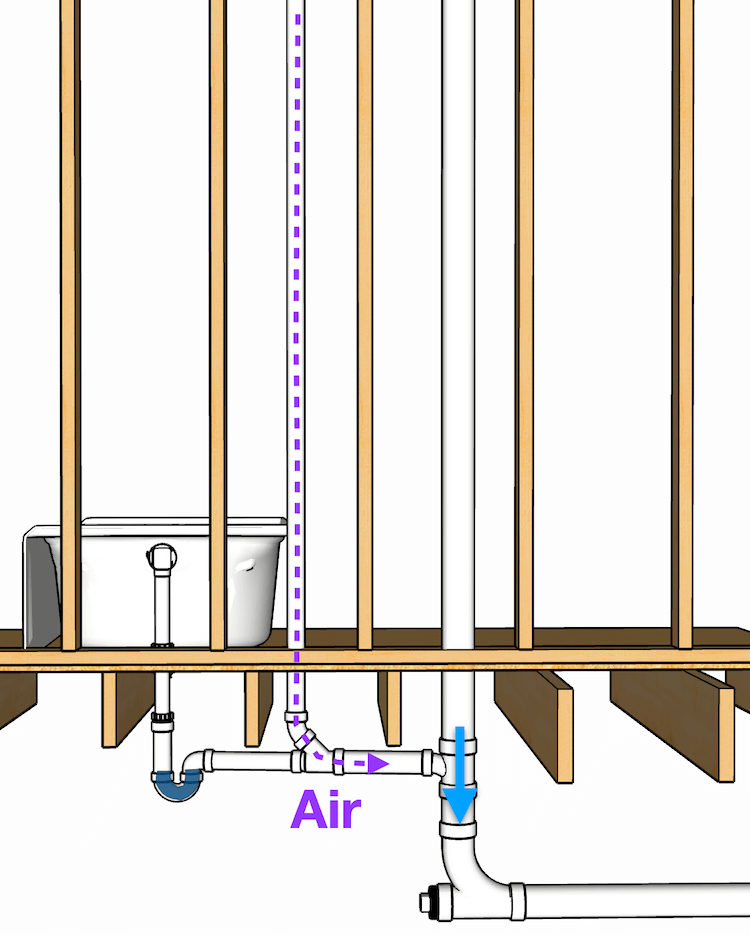The Significance of Ventilation in Your Home's Plumbing Systems
The Significance of Ventilation in Your Home's Plumbing Systems
Blog Article
They are making a number of great points about Essential Plumbing Vent Pipes: Understanding Their Role in general in this post below.

Correct ventilation in plumbing systems is frequently ignored, yet it is crucial for keeping the performance and security of your home's plumbing. Air flow assists manage atmospheric pressure, stop the buildup of harmful gases, and make sure the effective elimination of waste. In this overview, we will check out the relevance of appropriate pipes ventilation, how it works, and the advantages it gives your plumbing system.
Just How Ventilation Functions in Pipes Equipments
Air Pressure Policy
Appropriate ventilation maintains well balanced air pressure within the plumbing system. When water streams through pipelines, it displaces air. Without appropriate ventilation, this variation can create unfavorable pressure, bring about slow down drains pipes or siphoning of water from traps, which can trigger undesirable odors to leak right into the home.
Stopping Sewage System Gas Buildup
One of one of the most vital features of pipes vents is to prevent drain gases, such as methane and hydrogen sulfide, from collecting within the home. These gases can posture serious health risks and are extremely flammable. Vent pipes allow these gases to leave safely outside.
Assisting in Waste Removal
Air flow aids in the effective removal of wastewater by avoiding airlocks in the drainage system. When air can move freely through the vents, it permits water and waste to stream efficiently with the pipes, reducing the danger of obstructions and back-ups.
Benefits of Correct Ventilation
Improved System Performance
Correctly aerated plumbing systems run a lot more successfully, with fewer blockages, faster draining pipes, and less strain on the pipes. This efficiency expands the life-span of the pipes system.
Improved Air High Quality
By avoiding sewer gases from entering your home, correct ventilation adds to much better interior air quality, making your living setting healthier and much more comfy.
Preventing Water Damage
Ample ventilation helps stop water from being siphoned out of catches, which can result in sewage system gases going into the home and triggering water damage in time.
Actions to Ensure Correct Air Flow
Consulting Plumbing Codes
Always seek advice from regional plumbing codes when making or customizing your pipes system. These codes offer the needed standards for appropriate airing vent and guarantee your system fulfills safety and security requirements.
Routine Inspection and Upkeep
Normal evaluations can assist identify potential ventilation concerns before they come to be significant troubles. Upkeep jobs, such as cleansing air vent pipes and checking for obstructions, are vital for maintaining the system in good working order.
Professional Installment
For brand-new installations or significant adjustments, it's smart to hire a specialist plumbing technician. They have the know-how to ensure the air flow system is correctly created and installed according to code.
Understanding Ventilation in Plumbing
Ventilation in pipes refers to the network of pipes that allow air to move through the water drainage system. These vents serve numerous objectives, consisting of controling atmospheric pressure within the pipelines, stopping sewer gases from going into the home, and aiding in the smooth flow of wastewater.
Types of Pipes Vents
Key Stack Vent
The main pile air vent, likewise known as the air vent stack, is the primary air vent in a pipes system. It extends from the primary drain line up through the roof, permitting gases to escape and fresh air to go into the system.
Branch Vent
Branch vents connect to the primary pile vent and offer private components, such as sinks, toilets, and showers. These vents make certain that each component has appropriate ventilation to operate effectively.
Air Admittance Shutoff (AAV).
An Air Admission Shutoff (AAV) is a one-way shutoff that allows air to enter the plumbing system without the need for a conventional vent pipe extending with the roofing. AAVs are frequently made use of in restorations or areas where installing a common air vent is impractical.
Signs of Poor Air Flow in Plumbing.
Slow Draining Fixtures.
If your sinks, tubs, or bathrooms are draining pipes gradually, maybe an indication of poor air flow. Insufficient air flow can develop a vacuum result, making it hard for water to drain correctly.
Gurgling Sounds.
Gurgling audios coming from drains are usually a result of air being sucked with water catches as a result of adverse stress in the pipes. This is a clear indicator of insufficient ventilation.
Unpleasant Odors.
Sewer odors inside your home are a red flag that your plumbing system is not properly ventilated. This can mean that sewer gases are not being properly vented outside, leading to possibly unsafe conditions.
Usual Air Flow Blunders.
Inadequate Vent Sizing.
Using undersized vent pipes can cause poor air flow and pressure inequalities in the system. It's important to utilize vents that meet the details needs of your plumbing system.
Improper Vent Positioning.
Positioning vents as well far from the components they serve can reduce their effectiveness. Proper positioning guarantees that air can move freely and effectively via the system.
Disregarding Code Requirements.
Building regulations give particular guidelines for plumbing ventilation. Overlooking these codes can cause a system that fails to operate correctly and may result in costly repairs or health hazards.
Conclusion.
Proper ventilation is an important component of any pipes system, ensuring that it functions effectively and safely. By understanding the value of air flow, identifying the signs of inadequate ventilation, and taking actions to keep your system, you can avoid costly problems and shield your home's air quality.
4 Things You Should Know About Your Plumbing Vents
What Plumbing Vents Are
Also called a vent stack, a plumbing vent is a vertical pipe attached to your drain line that runs through your roof. The plumbing vent pipe, or plumbing air vent, removes gas and odors from your plumbing system and allows fresh air to enter the pipes, helping the water to flow out of the drain pipes.
What Plumbing Vents Do
Plumbing vents have two basic functions. One of which is to allow unpleasant smelling wastewater and sewer gasses to escape your plumbing system instead of entering your home. Plumbing vent pipes are typically located on roofs, away from windows, to ensure the fumes exit the home completely.
The other function of the plumbing vent is to move fresh air into your plumbing system. This helps move water through every plumbing fixture in your house, like toilets and sink drains. Think of the way in which you need to let a little air into the bottle as you pour soda in order to make the drink flow smoothly.
Different Types of Plumbing Vents
True vent: This is the most common vent option. In simplest terms, a true vent is a vertical pipe attached to your drain line that exits through the roof. They often function as the main vent that other fixtures can connect to. Re-vent pipe or auxiliary vent: Attached to the drain line near specific plumbing fixtures, re-vent pipes run up and over to connect to the main vent. Common vent: Two plumbing fixtures installed on opposite sides of a wall are typically tied into the vent stack using something known as a sanitary cross. Wet vent: This venting option operates as a drain pipe and a vent at the same time. Wet vent drainage systems drain water from one fixture while venting the air from another. Although they’ve been used for over 100 years, wet vent systems have only recently been added to the plumbing code in many areas. If you’re planning on installing one in a bathroom remodel, make sure you check your local code prior to construction. Loop vent: For free-standing fixtures like kitchen island sinks, loop vents are ideal. These vent pipes run under the floor, rise from the P-trap, and create a loop inside the cabinet sink. Air admittance valve: An AAV is a one-way mechanical valve typically installed at the site of the plumbing fixture. AAVs allow venting to occur without having to tie into a larger venting system. They’re ideal for venting fixtures where you aren’t able to easily connect to an existing vent system. Common Plumbing Vent Issues
Although vent pipes typically don’t have water flowing through them, they’re still subject to many typical plumbing issues. For example, clogs are one of the most common problems associated with sewer vent pipes. If your vent pipe gets clogged, all of your plumbing fixtures tied into the vent stack will be affected.
A sink with a slow drain that bubbles and gurgles or a strong sewage smell around your toilet are both indicators that your toilet vent pipe is clogged. Because most vent pipes exit through the roof, old leaves, twigs or even a bird’s nest could be clogging the pipe.
Clogs in your vent pipe system cause a buildup of negative pressure, meaning that water won’t be able to flow out of your home very well. It’s similar to putting your finger over the opening of a straw to trap water inside. When you remove your finger, the water is able to flow out of the straw.
If you suspect you have any blockage in your vent, make sure you have a professional come examine the situation. Left unchecked, a blocked air vent can lead to other costly repairs, like leaks and sediment buildup.
Under Pressure
Pipe vents are essential aspects of a home’s plumbing system. Owning a home means learning about all sorts of things you never put much thought into before. But by understanding as much as you can about the important systems of your home, you can keep those budgets intact and those anxiety levels low.
https://www.homeserve.com/en-us/blog/home-improvement/plumbing-vents/

As a passionate person who reads about What Is A Plumbing Vent & How Do They Work?, I think sharing that segment was a good thing. Are you aware of somebody else who is inquisitive about the niche? Take a moment to promote it. I enjoy reading our article about What Is a Plumbing Vent and Why Is It Important.
Click Here Report this page